#edel rodriguez
Explore tagged Tumblr posts
Text
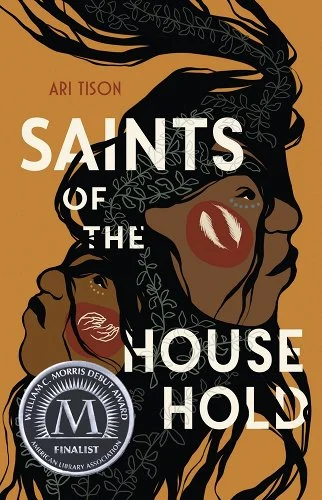

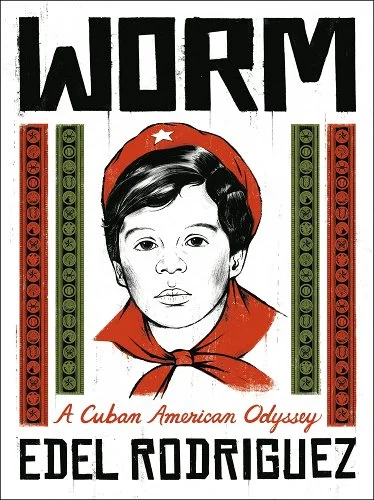
Congratulations to the 2024 Pura Belpré YA award honorees!
#Pura Belpre Awards#Saints of the Household#Ari Tison#The Prince and the Coyote#David Bowles#Amanda Mijangos#Worm a Cuban American Odyssey#Edel Rodriguez#ALA Youth Media Awards
19 notes
·
View notes
Text
Edel Rodriguez's Worm: A Cuban American Odyssey is one hell of a true story
Edel Rodriguez's Worm: A Cuban American Odyssey is one hell of a true story. One of the best of the year #comics #comicbooks #ncbd #graphicnovel
Hailed for his iconic art on the cover of Time and on jumbotrons around the world, Edel Rodriguez is among the most prominent political artists of our age. Now for the first time, he draws his own life, revisiting his childhood in Cuba and his family’s passage on the infamous Mariel boatlift. Story: Edel RodriguezArt: Edel Rodriguez Get your copy in comic shops! To find a comic shop near you,…
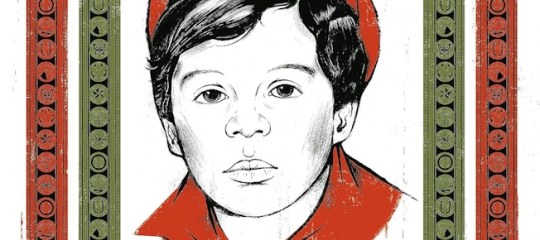
View On WordPress
#edel rodriguez#featured#graphic novel#graphic novels#metropolitan books#video#worm: a cuban american odyssey
0 notes
Text
35 Non-fiction Graphic Novels by BIPOC Authors
Every month Book Club for Masochists: A Readers’ Advisory Podcasts chooses a genre at random and we read and discuss books from that genre. We also put together book lists for each episode/genre that feature works by BIPOC (Black, Indigenous, & People of Colour) authors. All of the lists can be found here.
This Place: 150 Years Retold
Zodiac: A Graphic Memoir by Ai Weiwei with Elettra Stamboulis & Gianluca Costantini
Nat Turner by Kyle Baker
The Talk by Darrin Bell
The Best We Could Do by Thi Bui
I’m a Wild Seed by Sharon Lee De la Cruz
Messy Roots: A Graphic Memoir of a Wuhanese American by Laura Gao
Stamped from the Beginning: A Graphic History of Racist Ideas in America by Joel Christian Gill and Ibram X. Kendi
Wake: The Hidden History of Women-Led Slave Revolts by Rebecca Hall and Hugo Martinez
The 500 Years of Resistance Comic Book by Gord Hill
Good Talk: A Memoir in Conversations by Mira Jacob
The American Dream? A Journey on Route 66 Discovering Dinosaur Statues, Muffler Man, and the Perfect Breakfast Burrito: a Graphic Memoir by Shing Yin Khor
Banned Book Club by Kim Hyun Sook, Ryan Estrada, and Ko Hyung-Ju
In Limbo by Deb J.J. Lee
This Country: Searching for Home in (Very) Rural America by Navied Mahdavian
Mexikid: A Graphic Memoir by Pedro Martín
Monstrous: A Transracial Adoption Story by Sarah Myer
Steady Rollin': Preacher Kid, Black Punk and Pedaling Papa by Fred Noland
Citizen 13660 by Mine Okubo
Your Black Friend and Other Strangers by Ben Passmore
Kwändǖr by Cole Pauls
Worm: A Cuban American Odyssey by Edel Rodriguez
Power Born of Dreams: My Story is Palestine by Mohammad Sabaaneh
A First Time for Everything by Dan Santat
Persepolis: The Story of a Childhood by Marjane Satrapi
Grandmothers, Our Grandmothers: Remembering the "Comfort Women" of World War II by Han Seong-Won
Death Threat by Vivek Shraya and Ness Lee
Palimpsest: Documents From A Korean Adoption by Lisa Wool-Rim Sjöblom
Big Black: Stand at Attica by Frank "Big Black" Smith, Jared Reinmuth, and Améziane
Victory. Stand!: Raising My Fist for Justice by Tommie Smith, Dawud Anyabwile, and Derrick Barnes
The High Desert by James Spooner
They Called Us Enemy by George Takei, Justin Eisinger, Steven Scott, and Harmony Becker
Feelings by Manjit Thapp
The Black Panther Party: A Graphic Novel History by David F. Walker and Marcus Kwame Anderson
Now Let Me Fly: A Portrait of Eugene Bullard by Ronald Wimberly and Braham Revel
8 notes
·
View notes
Text

Der Spiegel, February 4, 2017. Illustration by Edel Rodriguez.
3 notes
·
View notes
Text
2 notes
·
View notes
Text
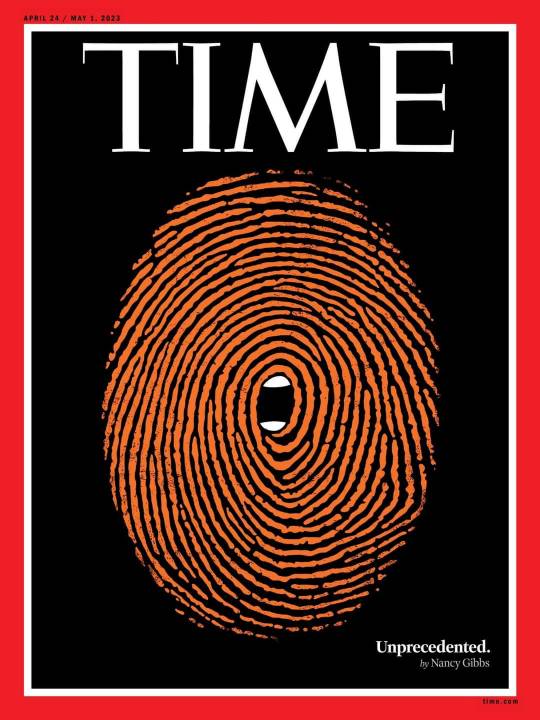
@Edel Rodriguez @studioedel
https://www.facebook.com/studioedel
7 notes
·
View notes
Text

🧐 … “How about them eggs?” … 🧐
Art: Edel Rodriguez … 🎨
March 2025 — @hrexach
#dr rex equality news information education#graphic source#graphic#graphics#hortyrex ©#horty#quote#it is what it is#dark humor#humour#arte#eggs#fried eggs#fuck trump
0 notes
Text

Il y a 8 ans
Illustration de Edel Rodriguez https://illoz.com/edel/
0 notes
Text
🐛 Worm: A Cuban American Odyssey
A few weeks ago, I saw a talk by Edel Rodriguez at What Design Can Do and it was amazing (Read my recap here).

He also talked about his childhood under Fidel Castro’s dictatorship in Cuba and about his parents' decision to risk everything by fleeing to the U.S. in a boat when he was nine years old.
He made an amazing illustrated memoir about a part of history I knew quite little about. Highly recommended!
0 notes
Text
The Mango Tree/La Mata de Mango by Edel Rodriguez
The Mango Tree/La Mata de Mango by Edel Rodriguez. Abrams Books for Young Readers, 2024. 9781419745867 Rating: 1-5 (5 is an excellent or a Starred review) 4 Format: Hardcover Genre: Picture book What did you like about the book? A wordless picture book illustrates the adventures of two boys living on an island teeming with vibrant wildlife. The illustrations, by Edel Rodriguez, an…
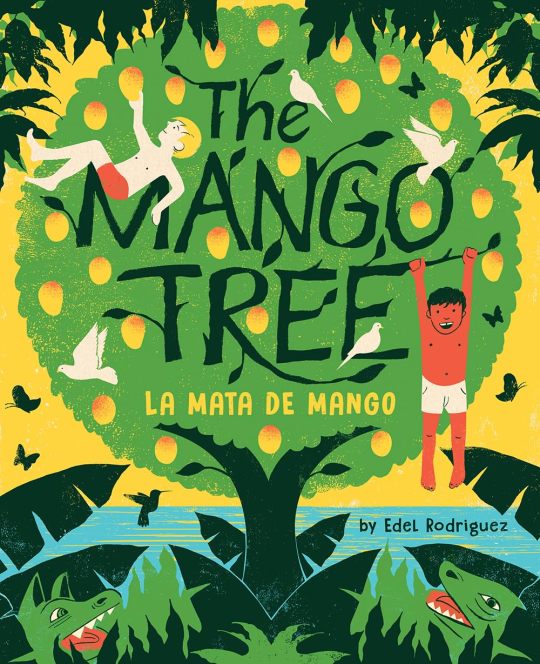
View On WordPress
0 notes
Text
Edel Rodriguez's Worm: A Cuban American Odyssey is one hell of a true story
Edel Rodriguez's Worm: A Cuban American Odyssey is one hell of a true story #comics #comicbooks #graphicnovel #grapbicmemoir
Hailed for his iconic art on the cover of Time and on jumbotrons around the world, Edel Rodriguez is among the most prominent political artists of our age. Now for the first time, he draws his own life, revisiting his childhood in Cuba and his family’s passage on the infamous Mariel boatlift. Story: Edel RodriguezArt: Edel Rodriguez Get your copy in comic shops! To find a comic shop near you,…
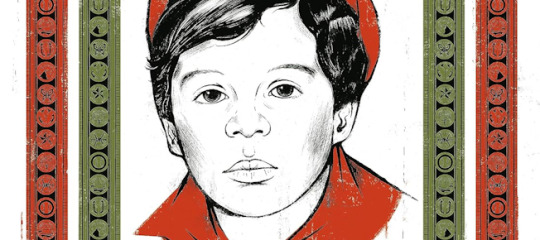
View On WordPress
#edel rodriguez#featured#graphic novel#graphic novels#metropolitan books#video#worm: a cuban american odyssey
0 notes
Text
Antonio Velardo shares: Edel Rodriguez Isn’t Afraid to Live With the Consequences by Benjamin P. Russell
By Benjamin P. Russell The political artist drew some of the most provocative images of the Trump presidency. “Worm,” his new graphic memoir of emigrating from Cuba to the U.S., skewers the powerful once more. Published: November 8, 2023 at 05:02AM from NYT Books https://ift.tt/UnYJw7x via IFTTT
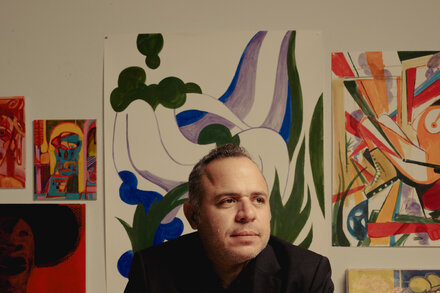
View On WordPress
0 notes
Text
“You ask me what have you taken away from me?
Well, You have taken away my sky and gave me a concrete roof and then you snatch dreams from my slumber and left me half dead on the bed. And you ask me what have you taken away from me? You took away my world from me. A world that I could travel and reach to with my thoughts. ”
A bird says to the man who caged her and calls himself her owner.
- TheRainchild

Image:- Pinterest , Edel Rodriguez
1 note
·
View note
Text
How a Cuban American Illustrator Sees This Country Today
Edel Rodriguez’s new exhibition, “Apocalypso,” reflects on democracy under threat in the nation that welcomed him in his childhood.
— By Graciela Mochkofsky | May 4, 2023

Art work by Edel Rodriguez.
On a recent, gray morning, I drove with the Cuban American artist Edel Rodriguez in his blue Mini Cooper to the County College of Morris (C.C.M.), in Randolph, New Jersey, to see the latest show of his work, “Apocalypso” (a portmanteau of “apocalypse” and “calypso,” for the often satirical popular Caribbean music). Its theme, he explained, is “the state of the world in the past thirteen years”: horrible, but you can still laugh about it. Rodriguez, who is fifty-one, is best known for his striking editorial illustrations of the Trump years, many of which appeared in The New Yorker, including “After the Insurrection,” in which an American flag waves at half-mast against a dark sky, and which appeared on the cover of the magazine the week after January 6, 2021. (In 2016, a cover for Time’s “Meltdown” series, showing an orange head, with no features except for a yelling mouth and bright-yellow hair, melting away, won the American Society of Magazine Editors’ award for best magazine cover.) The show features Rodriguez’s editorial work, and also a selection of his drawings, posters, book covers, acrylic paintings, and Cuban-cigar-box assemblages.

“After the Insurrection,” which was first published as the cover of the January 18, 2021, issue of The New Yorker. © 2021 Edel Rodriguez and The New Yorker.
We spent some time looking at two drawings, in particular. Initially, they appeared to be different perspectives of the same scene. In one, a crowd of protesting men march toward the viewer, with a domed Capitol in the background; in the other, a crowd of protesting men, this time with their backs to the viewer, march toward what looks like the same building. Only when you look closer do you realize that the drawings portray two very different events. In the first, the men have beards, wear military caps, hold rifles, and wave Cuban flags; a placard reads “Patria o muerte” (“Fatherland or death”). In the second, the men wear maga hats, brandish sticks, and wave American and Confederate flags; the placard reads “Trump.” The first is a portrait of January 8, 1959, in Havana, when the Cuban Revolution deposed Fulgencio Batista and brought Fidel Castro to power; the second is of January 6, 2021, when supporters of Donald Trump stormed the U.S. Capitol, on which the Cuban Capitol was modelled. The drawings are from Rodriguez’s forthcoming graphic memoir, which tells his story as a Cuban immigrant; he summarizes it as “my life between two insurrections.”
The comparison might seem like a stretch, and it is certain to provoke outrage within the Cuban American community. Ever since Castro defined his regime as Communist, the exiled community, which is still mostly resident in the Miami area, has embraced the anti-Communist cause, equating even the faintest progressive policies with the hated regime they had fled. And—ever since President John F. Kennedy refused to offer air support on the day of the botched C.I.A.-sponsored Bay of Pigs invasion, in 1961—for most Cuban Americans embracing that cause has meant embracing the Republican Party. Rodriguez’s illustrations reclaim the community’s grievances, mythologies, and yearnings, and suggest that every Cuban American who opposes the island’s autocratic regime should also be anti-Trump—and these days, by extension, anti-Republican.
As Rodriguez sees it, his art is an expression of his life experience as an exile in this country. Born in 1971, he was raised among sugarcane and tobacco fields in El Gabriel, a village south of Havana. His parents—his mother was a homemaker and his father a wedding and portrait photographer—did not support the revolution, and they were looking for a way to leave for Spain when a different opportunity presented itself, in early 1980. In the midst of an economic and diplomatic crisis, the government announced that Cubans who wanted to leave the island and who had someone to pick them up at the port of Mariel, to the east of Havana, could do so. About a hundred and twenty-five thousand Cubans set off, between April and October, in what became known as the Mariel boatlift. Rodriguez, who was eight at the time, his parents, and his sister were among the Marielitos; his mother had family members in Florida, who sent a boat to get them.
Rodriguez grew up in Miami, the city that Barack Obama later called “a clear monument to what the Cuban people can build.” (The title of Rodriguez’s memoir, which will be published in November, is “Worm,” which was Fidel Castro’s term for the exiles.) For a while, Rodriguez’s father did odd jobs—street vender, painter, construction worker—then he started a small tow-truck business. Rodriguez wanted to be an artist, and, in the early nineteen-nineties, he won a scholarship to study painting at the Pratt Institute, in Brooklyn; after graduating, he got a job at Time, and soon became an art director of the international edition. In 1997, he married Jennifer Roth, an artist from New Hampshire who is a granddaughter of a Holocaust survivor, and the couple moved to a house in New Jersey, where he still has his studio. But, like so many émigrés, he lives in a state of nostalgia for the lost country. “To me, living in Cuba would be a dream. But I don’t think it will happen,” Rodriguez told me. “The immigrant lives like that, floating in the middle, missing his things. There is no solution. There is no perfect ending.”
Trump’s electoral triumph dramatically altered Rodriguez’s view of the country that had welcomed him in his childhood. “I never thought that I’d be fearful in this country, that I’d have to think twice about what to say,” he told me. His idea of America as the beacon of democracy was upended when, a few weeks after being sworn in, Trump imposed what became known as the “Muslim ban,” prohibiting entry to the U.S. for citizens and refugees from seven mostly Muslim countries. “My life mirrored that of many refugees who were seeking asylum in America but had suddenly been barred,” Rodriguez writes, in “Worm.” “How could a country known for welcoming immigrants suddenly turn so xenophobic?” He sensed that democracy itself was under threat, and that led to his likening of Trump to Castro. “Having lived with the propagandistic distortions of the Cuban Communist Party, I was especially attuned to the danger of the government warping reality, and the media’s failure to confront that.”

Art work by Edel Rodriguez. People on a Tank with Guns and a Cuban Flag.
In November, 2016, he drew Trump’s head as an orange meteor with a yellow tail, hurtling toward the Earth. He posted that image, and several others, on Instagram, and granted permission to anyone who wanted to print the images as posters and march with them; many people did. A few years earlier, he had been working on a series of illustrations about isis which culminated in the image of a militant brandishing a knife in one hand and his own head in the other. When the Muslim ban was announced, Rodriguez redid the image, with Trump wielding a knife in one hand, and the head of the Statue of Liberty in the other. The German magazine Der Spiegel published it on the cover in February, 2017, under the title “America First.”
An image depicting the beheading of America’s preëminent symbol of freedom by a sitting American President attracted a lot of attention, and Rodriguez was widely interviewed. Not all of the attention was positive: he was attacked on social media. A vice-president of the European Parliament found it “tasteless.” So did Rodriguez’s mother, who still lives with his father in Miami, where Rodriguez has some eighty relatives—many of them, like his mother, are conservatives. “When did you decide to become a cheap artist, criticizing the President of the United States?” she asked him. They didn’t speak for weeks.
But severed heads, and machetes, are everywhere in his work, a product, he says, of a childhood lived in the Cuban countryside. (His mother butchered chickens and goats in their yard in El Gabriel.) The show at C.C.M. includes a chicken head on a pike, painted with coffee on paper; an acrylic painting in a cigar box of the heads of four migrants piled on a sailboat; a crowned head lying on a bloody knife, on the official poster for Joel Coen’s movie of “Macbeth”; and more. “These images have been in my head my entire life. I’ve been drawing them since I was a teen-ager,” Rodriguez told me.
“Most of my work starts from where I was born,” he said at a presentation, in 2017. “The graphics of the revolution got ingrained in my head—how you communicate powerful messages . . . We were all raised to be pioneers for the revolution.” The revolution’s aesthetics, stark and maximalist, remain an obvious influence in his art. At the same time, “humor is very important,” he told me. “If you make someone laugh, they’ll slightly go to your side. If you figure out how to share your ideas with humor, you can change people’s hearts.” And this, he told me, is also a legacy from his past. “In Cuba,” he said, “you laugh at things because there is no solution. You are laughing at the ridiculousness of the whole thing.”
One thing that many people in this country can’t understand, he told me, is the growing support among members of the Latinx community for Republican candidates with strong anti-immigrant platforms—how they “can be racist, or anti-gay.” Just a few years before Trump came to power, support for conservative politicians had started to wane among Cuban Americans, leading to an almost equal number leaning Democratic as Republican—largely a result of the fact that the younger, U.S.-born generations were increasingly progressive. But, in 2016, according to exit polls, fifty-four per cent of Cuban Americans in Florida voted for Trump (compared with twenty-eight per cent of Latinxs nationwide); in 2020, according to the Pew Research Center, nearly six out of ten registered Cuban American voters nationwide identified as Republican, and more than half approved of the Trump Presidency.
“Cuban voters have ebbed and flowed toward the Republican Party,” Mark Hugo Lopez, the director of race and ethnicity research at Pew Research, confirmed. “That trend has recently gotten stronger,” Ada Ferrer, the author of the 2022 Pulitzer Prize-winning book “Cuba: An American History,” told me. Ferrer, who is also Cuban American, is still trying to find “a satisfactory explanation” to why “the most recent arrivals” from the island, those who came in the past fifteen years, “have become so Trumpist.” Cuban Americans in Florida have also become strong supporters of the state’s conservative governor, Ron DeSantis. Rodriguez thinks that many “Cuban American voters will vote for anyone who speaks strongly against Communism and promises to destroy the regime back on the island. This is their top voting issue. It’s all theatre, but the Republican Party does it very well, and the Democrats fail miserably at it.”
He also believes that the center is salvageable, and that, as he told me, “this country is much more in the middle than the extremes.” His fears for democracy, however, persist. As he writes in his memoir, “The decision to leave my country changed my life, but it wasn’t my decision. I was tossed about, like a boat at sea, by the winds of history. After many years, I had come to terms with my life as an American. Now I feel at the mercy of those winds yet again.” ♦
1 note
·
View note
Text
Top Google Result for "Edward Hopper" an AI-Generated Fake
AI is already rewriting art history.
When you Googled the famed realist artist Edward Hopper this week, the first featured image that appeared was convincing enough. A lone woman, painted in the artist's signature soft, muted style, stared out a window, sporting a red dress and hair tucked into a bun. Hopper created a number of similar paintings throughout his career; casual viewers, and even some not-so-casual ones, probably wouldn't think twice.
But they'd be deeply misled. Though it was certainly created in the style of the American great, the painting in question isn't a real Hopper. It's an AI-generated knockoff of the real artist's work — and in what feels like an unsettling turn for the internet's fraught information ecosystem, the fake somehow made it to the top of Google's search results.
"If you don't think visual AI is a problem," tweeted UK-based illustrator Penny Neville-Lee, who first caught the AI fake, "this is what comes up when you Google Edward Hopper."
If you don't think visual AI is a problem, this is what comes up when you @Google Edward Hopper. pic.twitter.com/W1X4YKU76G
— Penny Neville-Lee

(@PennyNevilleLee) May 3, 2023
The fact that the image was AI-generated became clear pretty quickly. For one thing, the woman's forearm and hand — a detail with which AI has long struggled — look downright bizarre.
And the website that the image is featured on — a digital art-sharing platform called Creative Fabrica which, in what appears to be a more recent addition to the site, features an AI-integrated platform that allows users to generate art — even provides which prompt was used to create the image: "a woman looking outside the window by Edward Hopper."
From there, the page for the platform's text-to-image integration tells you all you need to know.
"Now you can create any image you can imagine and use it for your crafting projects," reads the website. "These creations are generated using Artificial Intelligence and are all one-of-a-kind."
All to say, you don't need to be an AI expert or internet sleuth extraordinaire to confirm that this painting isn't the real deal. But while that may have been simple enough for a human to decipher, the reality — and the concern — still stands that Google's algorithms weren't able to bridge the same divide, not just allowing the image to show up on the second or third page of search results but featuring the AI-generated art in the search engine's algorithm-determined overview of the artist's work. In other words, one algorithm's fake painting fooled Google's algorithm. The snake has officially started to eat its tail.
Sure, to human eyes, there are enough red flags to keep anyone from soundly passing this work off as the real deal. But our digital worlds are facilitated much more by algorithms — Google, Bing, social media recommendation engines, and increasingly AI — than they are people.
And to that end, in terms of both scale and quality, it's probably fair to say that synthetic content has only just scratched the surface.
As more AI content, whether image or text-based, begins to flood the internet, it's very unlikely that all AI generations will be as obviously machine-made as this one. If Google and other search engines are unable to filter through AI content more effectively, convincing AI fabrications have a means of slipping through the historical — distorting and confusing established history, yes, but perhaps destabilizing and even rewriting history education as well.
"When one Googles 'Edward Hopper' now, the highlighted image is an AI manufactured image that looks like Edward Hopper's work," wrote illustrator Edel Rodriguez. "This is disgusting and must be stopped."
For its part, Google acknowledged that the featured fake may not have been the most ideal choice on its algorithm's behalf.
"Our automated systems aim to show the most helpful, high quality and relevant images for any query," a Google spokesperson told Futurism in a statement. "Given the scale of the open web, however, it's possible that our systems might not always select the best images regardless of how those images are produced, AI-generated or not."
"When we identify potential issues, we seek to develop algorithmic solutions that can help a wide range of queries," they added. "We also build tools like reverse image search to give people context so they can evaluate information and assess what content they can trust."
The spokesperson also pointed out that the image in question does have a source label, noting that removing content at scale is a tall and complicated order when it comes to the open web. And across the board, fact-checking and cross-referencing any information gleaned from online sources is always good practice. The company also replaced the fake painting with a severe-looking portrait photo of Hopper.
Still, seeing an AI-generated Hopper beating out the likes of real paintings posted online by the likes of the Met and the Whitney in Google's search engine is less than comforting.
It's all a bit surreal, and this certainly feels like a through-the-looking-glass moment. Between chatbots tossing misinformation back and forth to each other, a convincing AI-generation of a swagged-out Pope Francis fooling a major chunk of the internet into thinking it was real, and now Google's algorithm pulling an AI-painted Hopper to the top of its search, it doesn't exactly feel like we're on the edge of a new digital world anymore.
Instead, it feels like that new world is here — though the breadth of what that will look like, and how it will change us, still remains to be seen.
More on AI: Online Tutoring Company Stock Crashes as Chatgpt Steamrolls Its Business
The post Top Google Result for "Edward Hopper" an AI-Generated Fake appeared first on Futurism.
0 notes
